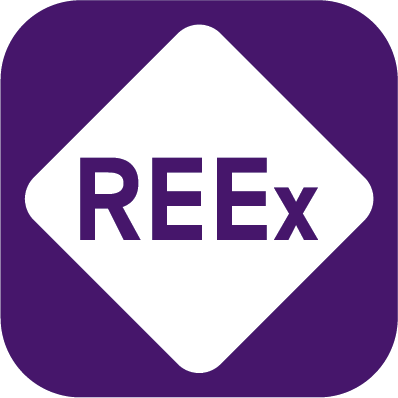lateshaholterm
About lateshaholterm
The Comprehensive Guide to Gold IRA Rollovers: Safeguarding Your Retirement With Precious Metals
In the realm of retirement planning, diversification is a key precept that buyers must adhere to in order to mitigate risks and enhance potential returns. One more and more well-liked strategy among traders is the Gold Particular person Retirement Account (IRA) rollover. This article aims to provide a comprehensive overview of Gold IRA rollovers, detailing their advantages, the method involved, and necessary considerations to bear in mind.
Understanding Gold IRAs
A Gold IRA is a specialised kind of individual retirement account that allows traders to hold physical gold and different precious metals as part of their retirement portfolio. Not like conventional IRAs, which usually include stocks, bonds, and mutual funds, Gold IRAs provide a hedge against inflation and economic instability. The intrinsic value of gold typically stays stable or appreciates throughout times of financial uncertainty, making it an attractive choice for long-term investors.
The Rationale Behind Gold IRA Rollovers
A rollover happens when an investor transfers funds from one retirement account to a different without incurring tax penalties. In the context of a Gold IRA rollover, this sometimes entails shifting belongings from a standard IRA, Roth IRA, or different retirement accounts into a Gold IRA. There are a number of reasons why an investor may consider this transfer:
- Inflation Hedge: Gold has historically been viewed as a secure haven throughout inflationary periods. By rolling over funds right into a Gold IRA, traders can protect their purchasing power.
- Portfolio Diversification: Adding gold to an investment portfolio can reduce total risk. Here is more information on best ira gold investment providers stop by our webpage. Gold often behaves differently than stocks and bonds, which may help stability the volatility of traditional investments.
- Lengthy-time period Worth: Gold has a long-standing status as a retailer of value. Investors might search to capitalize on gold’s potential for appreciation over time as part of their retirement strategy.
The Rollover Course of
The means of rolling over funds into a Gold IRA includes a number of steps:
- Select a Custodian: The first step is to pick out a reputable custodian who specializes in Gold IRAs. Custodians are accountable for managing the account and making certain compliance with IRS rules.
- Open a Gold IRA: Once a custodian is selected, the investor will need to open a Gold IRA account. This sometimes entails filling out an utility and offering needed identification and monetary info.
- Initiate the Rollover: The investor should contact their present IRA provider to provoke the rollover course of. This will contain filling out specific kinds and providing instructions for the transfer of funds.
- Fund the Gold IRA: As soon as the rollover is authorised, the funds will be transferred to the Gold IRA. The investor can then select which gold products to buy, adhering to IRS pointers concerning acceptable valuable metals.
- Purchase Gold: After funding the Gold IRA, the investor can instruct the custodian to buy gold on their behalf. This will embrace gold bullion, coins, or other authorized types of valuable metals.
- Store the Gold: The IRS requires that physical gold held in a Gold IRA be stored in an authorized depository. The custodian will arrange for the safe storage of the gold, making certain compliance with all laws.
Tax Implications and Laws
One among the first advantages of a Gold IRA rollover is the power to defer taxes on the transferred funds. As long because the rollover is executed properly, traders can avoid speedy tax liabilities. Nonetheless, there are specific IRS laws that have to be followed to make sure compliance:
- 60-Day Rule: Buyers should complete the rollover inside 60 days of receiving the funds from their current retirement account. Failing to take action could end in taxes and penalties.
- Direct vs. Indirect Rollovers: A direct rollover entails transferring funds straight from one custodian to a different, while an oblique rollover requires the investor to obtain the funds and then deposit them into the brand new account. Indirect rollovers are riskier because of the 60-day rule.
- Eligible Metals: Only certain types of gold and precious metals are allowed in a Gold IRA. The IRS specifies that gold have to be no less than 99.5% pure, and acceptable types embody American Gold Eagles, Canadian Gold Maple Leafs, and sure bars and rounds.
Dangers and Issues
Whereas Gold IRA rollovers can supply vital advantages, additionally they come with dangers and concerns that buyers should bear in mind of:
- Market Volatility: The worth of gold could be risky, and whereas it could serve as a hedge in opposition to inflation, it is not immune to price fluctuations.
- Fees and Bills: Investors should be aware of the charges related to Gold IRAs, including custodian charges, storage fees, and transaction charges. These prices can impression general returns.
- Liquidity Issues: Unlike stocks and bonds, bodily gold could be much less liquid. Investors could face challenges when making an attempt to sell their gold quickly, particularly in a fluctuating market.
- Regulatory Modifications: The regulatory panorama surrounding retirement accounts and valuable metals can change. Investors ought to stay informed about any potential modifications that may have an effect on their investments.
Conclusion
A Gold IRA rollover generally is a strategic transfer for investors seeking to diversify their retirement portfolios and protect towards economic uncertainty. By understanding the method, advantages, and associated dangers, people could make informed selections that align with their lengthy-time period financial objectives. As with any funding strategy, it is advisable to consult with a financial advisor or tax skilled to ensure that a Gold IRA rollover is the best selection on your unique circumstances. With cautious planning and consideration, a Gold IRA can serve as a invaluable element of a well-rounded retirement strategy.
No listing found.
